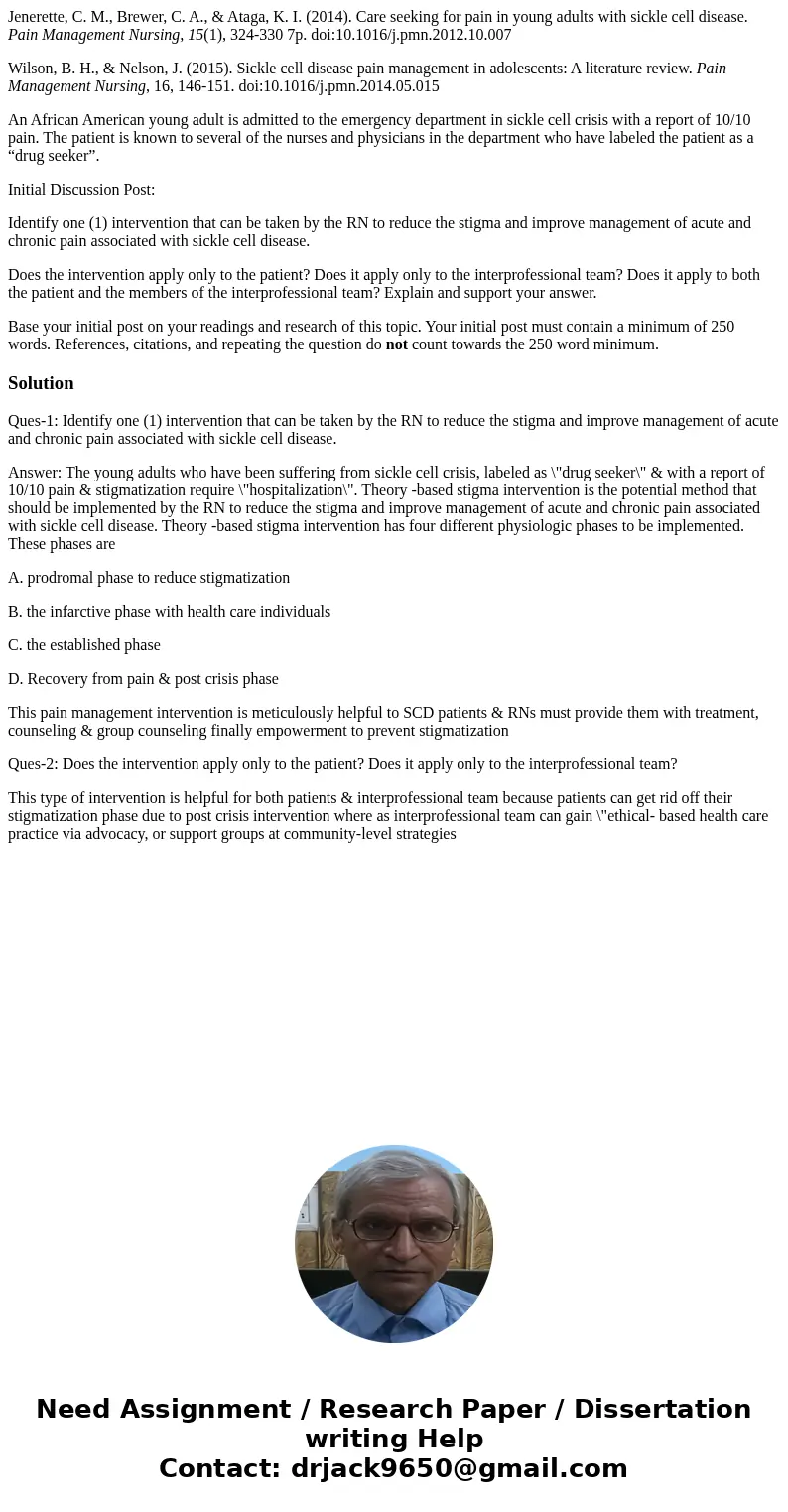Jenerette C M Brewer C A Ataga K I 2014 Care seeking for pa
Jenerette, C. M., Brewer, C. A., & Ataga, K. I. (2014). Care seeking for pain in young adults with sickle cell disease. Pain Management Nursing, 15(1), 324-330 7p. doi:10.1016/j.pmn.2012.10.007
Wilson, B. H., & Nelson, J. (2015). Sickle cell disease pain management in adolescents: A literature review. Pain Management Nursing, 16, 146-151. doi:10.1016/j.pmn.2014.05.015
An African American young adult is admitted to the emergency department in sickle cell crisis with a report of 10/10 pain. The patient is known to several of the nurses and physicians in the department who have labeled the patient as a “drug seeker”.
Initial Discussion Post:
Identify one (1) intervention that can be taken by the RN to reduce the stigma and improve management of acute and chronic pain associated with sickle cell disease.
Does the intervention apply only to the patient? Does it apply only to the interprofessional team? Does it apply to both the patient and the members of the interprofessional team? Explain and support your answer.
Base your initial post on your readings and research of this topic. Your initial post must contain a minimum of 250 words. References, citations, and repeating the question do not count towards the 250 word minimum.
Solution
Ques-1: Identify one (1) intervention that can be taken by the RN to reduce the stigma and improve management of acute and chronic pain associated with sickle cell disease.
Answer: The young adults who have been suffering from sickle cell crisis, labeled as \"drug seeker\" & with a report of 10/10 pain & stigmatization require \"hospitalization\". Theory -based stigma intervention is the potential method that should be implemented by the RN to reduce the stigma and improve management of acute and chronic pain associated with sickle cell disease. Theory -based stigma intervention has four different physiologic phases to be implemented. These phases are
A. prodromal phase to reduce stigmatization
B. the infarctive phase with health care individuals
C. the established phase
D. Recovery from pain & post crisis phase
This pain management intervention is meticulously helpful to SCD patients & RNs must provide them with treatment, counseling & group counseling finally empowerment to prevent stigmatization
Ques-2: Does the intervention apply only to the patient? Does it apply only to the interprofessional team?
This type of intervention is helpful for both patients & interprofessional team because patients can get rid off their stigmatization phase due to post crisis intervention where as interprofessional team can gain \"ethical- based health care practice via advocacy, or support groups at community-level strategies

 Homework Sourse
Homework Sourse